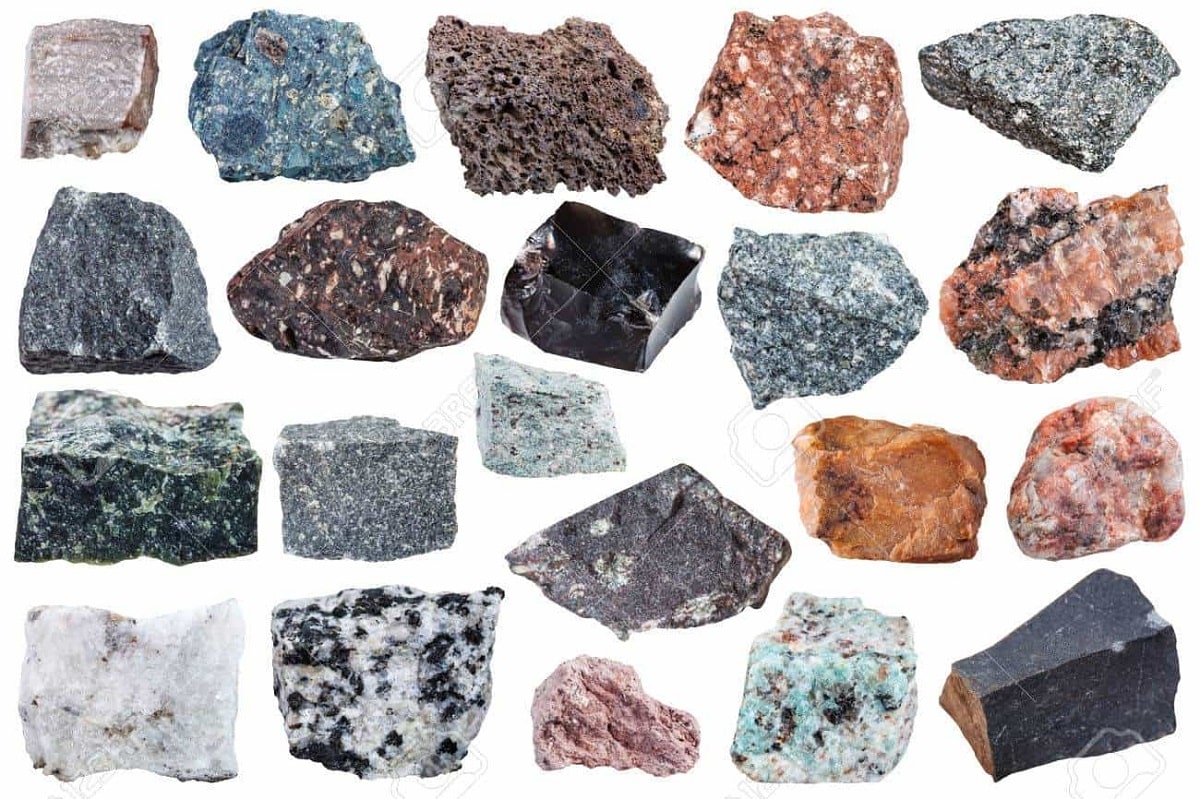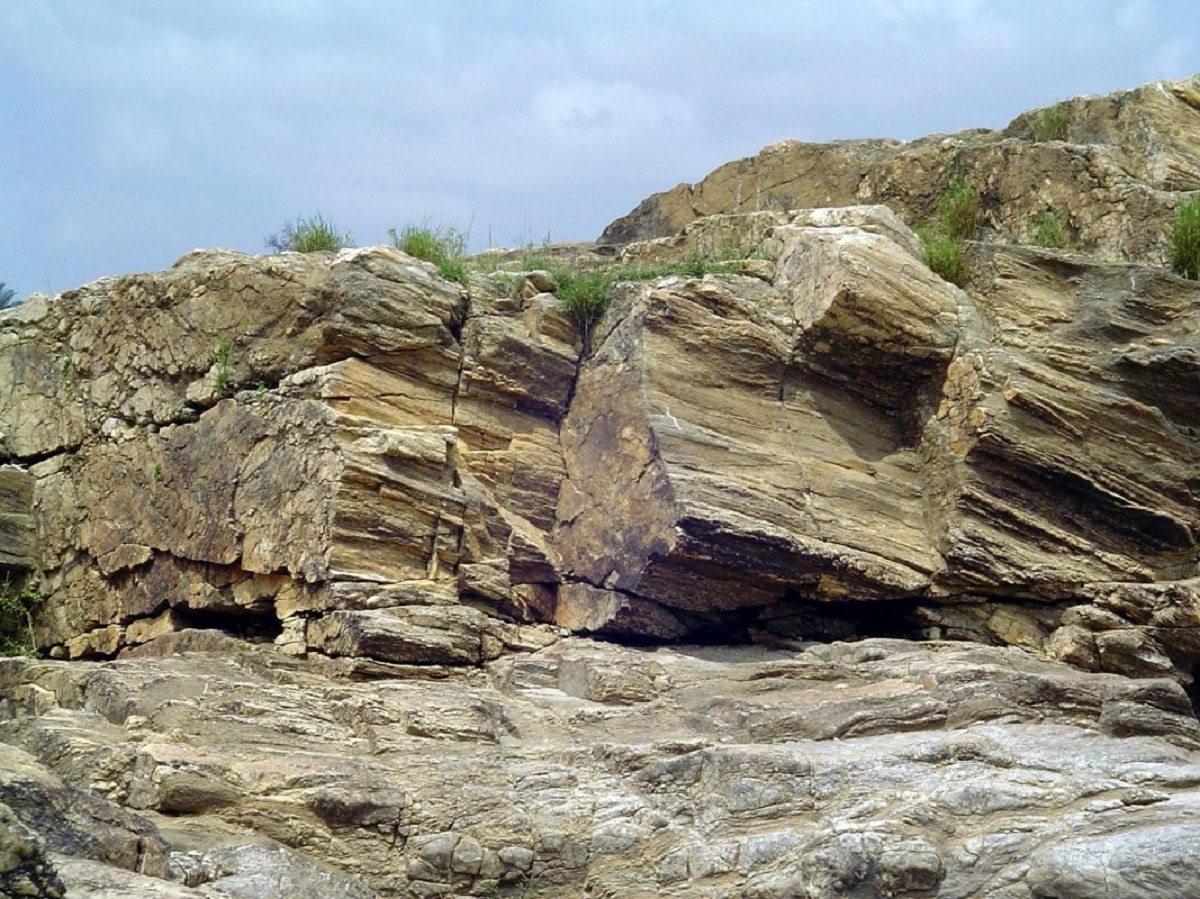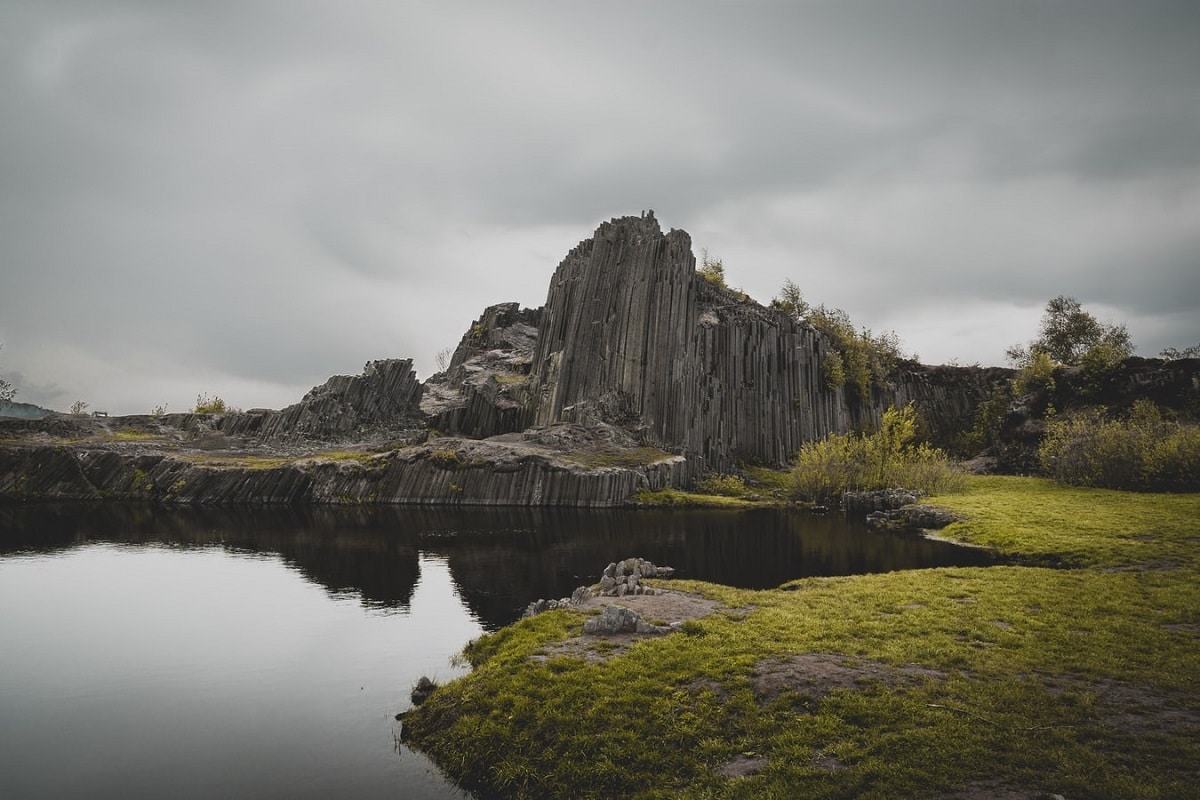
On the planet there are different types of rocks depending on the training and origin process they have. In addition, they are classified by their characteristics and physical and chemical properties. Basically, we have the basic rock types which are sedimentary, igneous, and metamorphic. Each of these rock types has, in turn, more specific classifications.
In this article we are going to tell you about the main types of rocks that exist, their classification and characteristics.
Rock types

Sedimentary rocks
Rocks are formed by the transport and deposition of material due to the action of wind, water, ice, or the chemical deposition of aqueous fluids. The definition also includes accumulations of inorganic substances, such as shells secreted by organisms. Sedimentary rocks are further divided into detrital rocks and non-detrital rocks.
Detrital sedimentary rocks
They were deposited from other rock fragments after a transport phase. These rocks are classified based on the size and shape of the fragments that compose them.
Therefore, rocks with large fragments (greater than 2 mm) and rounded shapes are conglomerates, while if they are angular they are called breccias. When the pieces are loose, they are deposits called gravels. Sandstones have a medium grain size (0,06 to 2 mm) visible to the naked eye or light microscope, and silts and clays have a very small grain size (less than 0,06 mm), which can only be view with an electron microscope.
Gravel is used as an aggregate in construction, primarily to make concrete. Gravel, especially sandstone, can be used as a building stone if its durability is good.
Clay is used in many aspects of everyday life.. They have medicinal and cosmetic uses. They are used as building materials to make bricks and ceramics. They are also used as raw material in the construction of mud and adobe walls and in the manufacture of traditional ceramics, earthenware and porcelain. Due to their water resistance properties, they can be used for the absorption of contaminated products, industrial filtration, etc.
Non-detrital sedimentary rocks

They are formed by the precipitation of certain compounds in aqueous solution or by the accumulation of substances of organic origin. A very common type is limestone, composed mainly of calcium carbonate precipitates or accumulations of bone fragments (corals, gastropods, ostracods, etc.). In these rocks, the presence of these remains that make up the fossils is usually observed. The different limestones are calcareous tuffaceous rocks that are very porous and rich in plant remains that originate in rivers when calcium carbonate is deposited on the vegetation. Dolomite is another rock, different from the previous one, whose chemical composition contains, in addition to carbonates and calcium, a high proportion of magnesium.
Flint is produced when the remains of the shells of organisms such as diatoms that use silica to build their shells accumulate, or when the silica is washed away by water to precipitate.
Another type of rock is evaporite, which is produced by the evaporation of water in marine and lagoon environments. The most important rock of this type is gypsum, a rock formed by the precipitation of calcium sulfate.
Limestone is a material used to make cement and lime for construction. It is also a material used in the construction of building facades and floor coverings. Plaster is used in wall cladding and in the manufacture of castings.
Coal and oil are non-clastic sedimentary rocks. denominated of organic origin because they arise from the accumulation of residues of organic matter. Coal comes from plant remains and oil comes from marine plankton. Given their heat generation and the energy they generate by combustion, they are of great economic interest.
Igneous rocks

They are rocks that have cooled from liquid silicate components of the Earth's interior. This melt is in a high temperature state. The area near the surface (the crust) produces plutonic rocks when it cools and solidifies on its way to Earth's surface, and volcanic rocks when it cools and solidifies on the surface.
plutonic igneous rocks
Plutonic rocks originate below the Earth's surface, so when they are subjected to great pressure, their minerals stick together very tightly, forming dense, non-porous rocks. They cool very slowly, so the mineral crystals that form them can be relatively large. Sometimes they can be seen with the naked eye.
Granite is the most common plutonic rock. They consist of a mixture of the minerals quartz, feldspar, and mica.
Volcanic rocks
They originate when magma is ejected from the Earth's surface, producing lava from volcanoes and cooling to low temperatures and pressures at the Earth's surface. The result is a rock composed of a large number of small crystals or an amorphous substance (glass) that does not crystallize. Sometimes, some minerals may be surrounded by microcrystalline or amorphous material.
Volcanic rocks are usually classified according to their chemical composition. Basalt is a very common rock that is easily identified by its dark hue. Rhyolite, on the other hand, takes on a lighter shade.
Metamorphic rocks

Metamorphic rocks arise from pre-existing rocks that undergo readjustment due to a significant increase in temperature and pressure due to geological processes (burial, magma intrusion, etc.). This realignment causes changes in its mineral and chemical composition, transforming the original rock (sedimentary, igneous or metamorphic) into a new type that we call metamorphic.
The metamorphic process takes place in the solid state., that is, the transformation occurs while the rock has never melted. Most metamorphic rocks are characterized by widespread fragmentation of the minerals, which makes them appear flattened, creating the layered structure of the rock. This phenomenon is called foliation
The slabs come from clay, having a very low temperature and pressure rise due to burial. They have sheet-like structures called slaty (very straight, parallel, and very thin sheet-like structures). They are usually black and often contain fossils. They are used in roof tiles in construction and to cover the walls and floors of houses.
I hope that with this information you can learn more about the types of rocks and their characteristics.